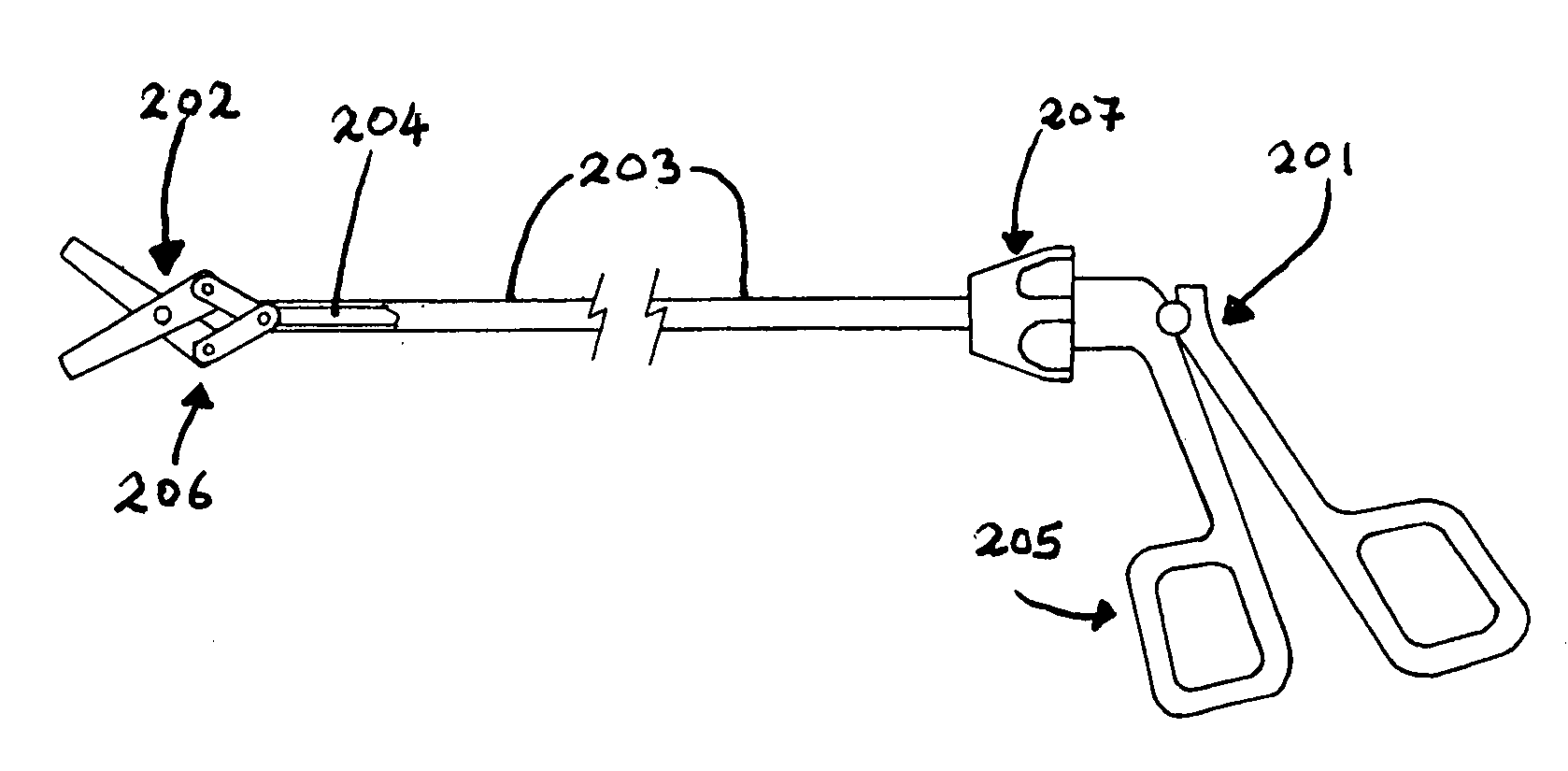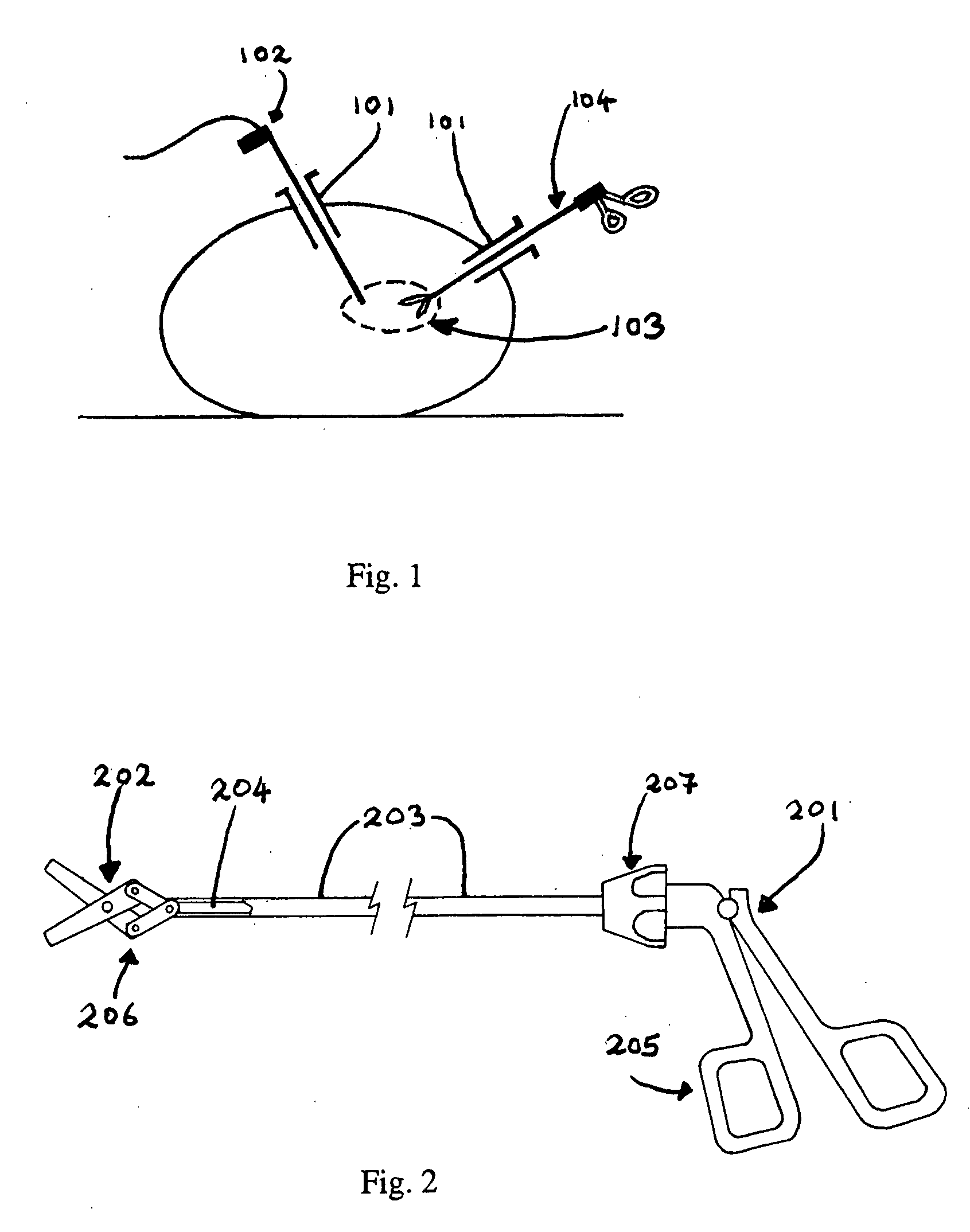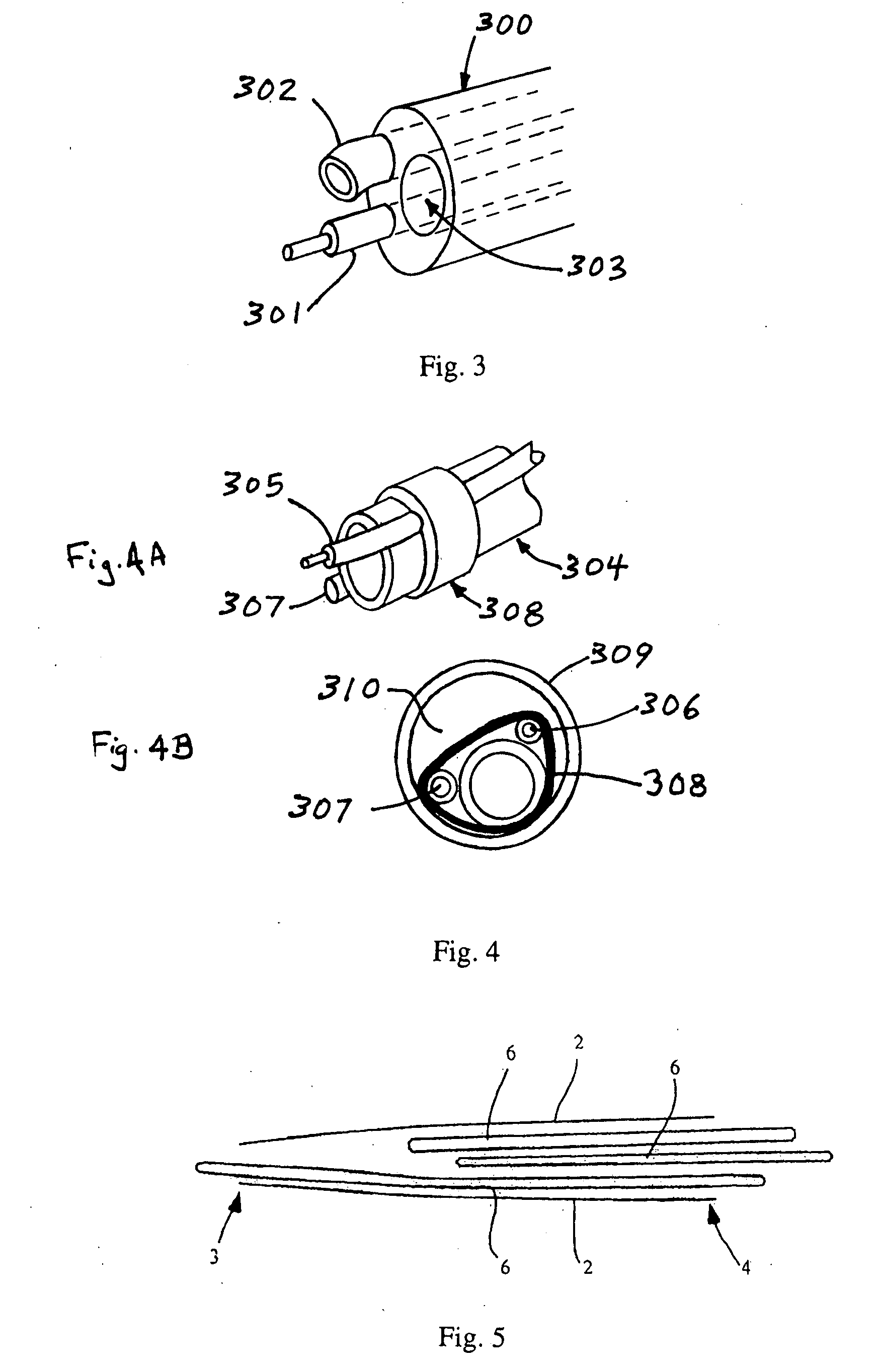Multifunctional surgical instrument
a surgical instrument and multi-functional technology, applied in the field of instruments, can solve the problems of increasing the chance of damage to the surrounding tissue, prolonging the time of a surgical procedure, and requiring additional weight, and reducing the efficiency of the operation
- Summary
- Abstract
- Description
- Claims
- Application Information
AI Technical Summary
Benefits of technology
Problems solved by technology
Method used
Image
Examples
Embodiment Construction
[0063]The embodiments disclosed in this document are illustrative and exemplary and are not meant to limit the invention. Other embodiments can be utilized and structural changes can be made without departing from the scope of the claims of the present invention.
[0064]As used herein and in the appended claims, the singular forms “a,”“an,” and “the” include plural reference unless the context clearly dictates otherwise. Thus, for example, a reference to “a rod” includes a plurality of such rods, and a reference to “a tool” is a reference to one or more tools and equivalents thereof, and so forth.
[0065]In the following, the term “instrument” denotes the entire device. The term “tool” can mean scissors, forceps, spoon forceps, graspers, cauterizing wire, glue gun, other devices that can perform a surgical function, light-emitting devices, lamps, radiant heat devices, heat transducers, measuring devices, and electrical coils. The tool can also comprise an elongate element, the elongate ...
PUM
 Login to View More
Login to View More Abstract
Description
Claims
Application Information
 Login to View More
Login to View More - R&D
- Intellectual Property
- Life Sciences
- Materials
- Tech Scout
- Unparalleled Data Quality
- Higher Quality Content
- 60% Fewer Hallucinations
Browse by: Latest US Patents, China's latest patents, Technical Efficacy Thesaurus, Application Domain, Technology Topic, Popular Technical Reports.
© 2025 PatSnap. All rights reserved.Legal|Privacy policy|Modern Slavery Act Transparency Statement|Sitemap|About US| Contact US: help@patsnap.com



